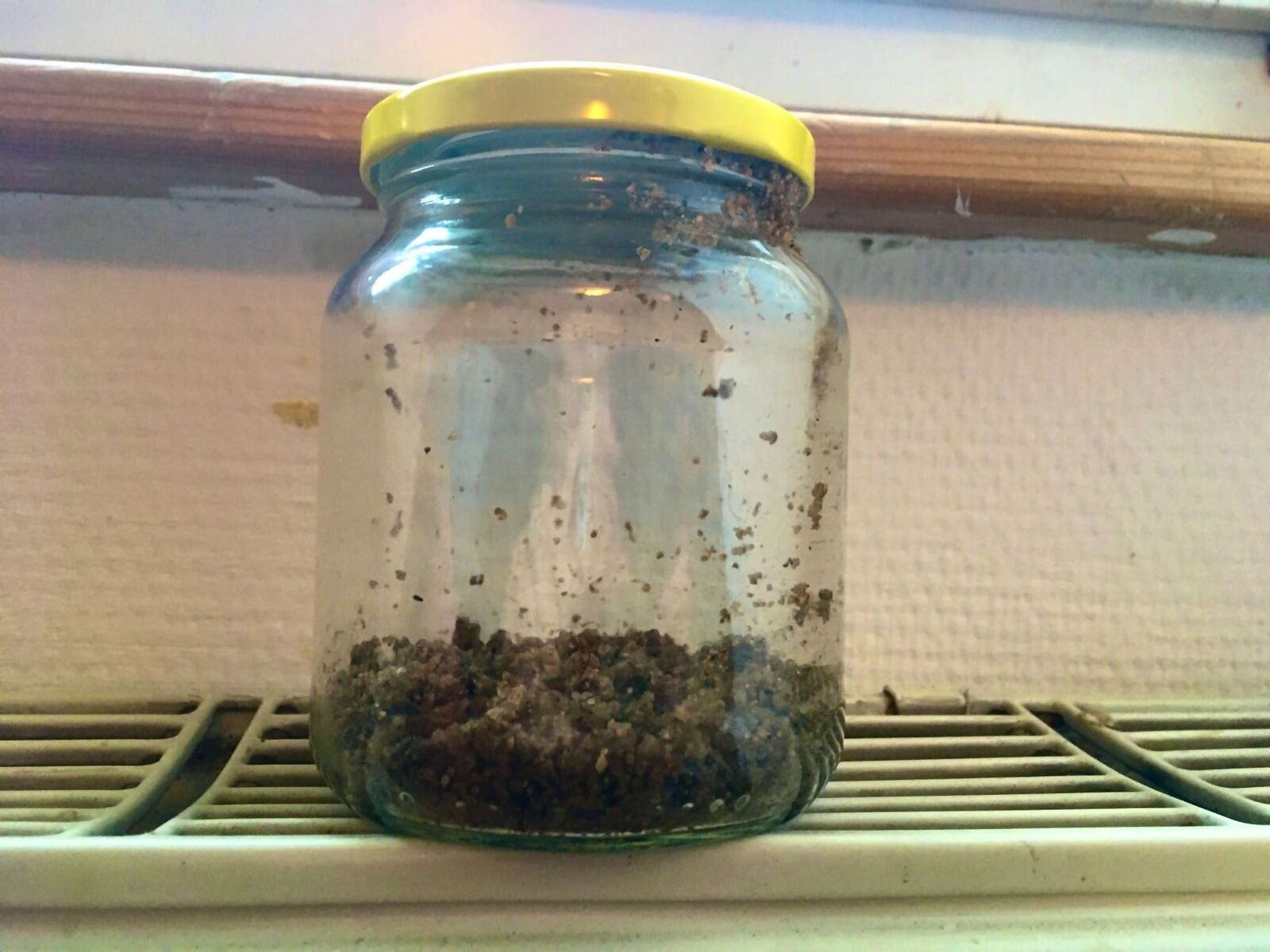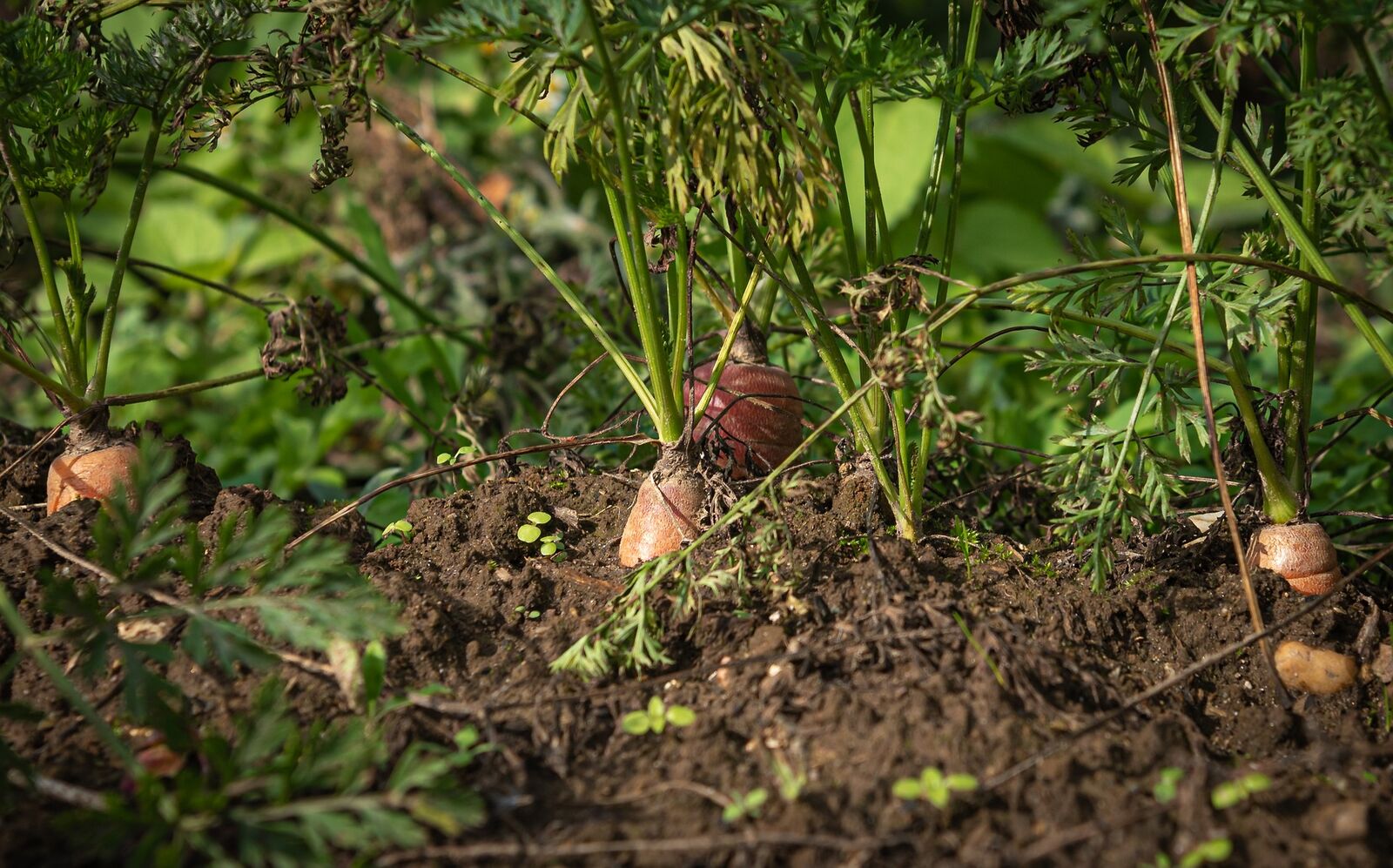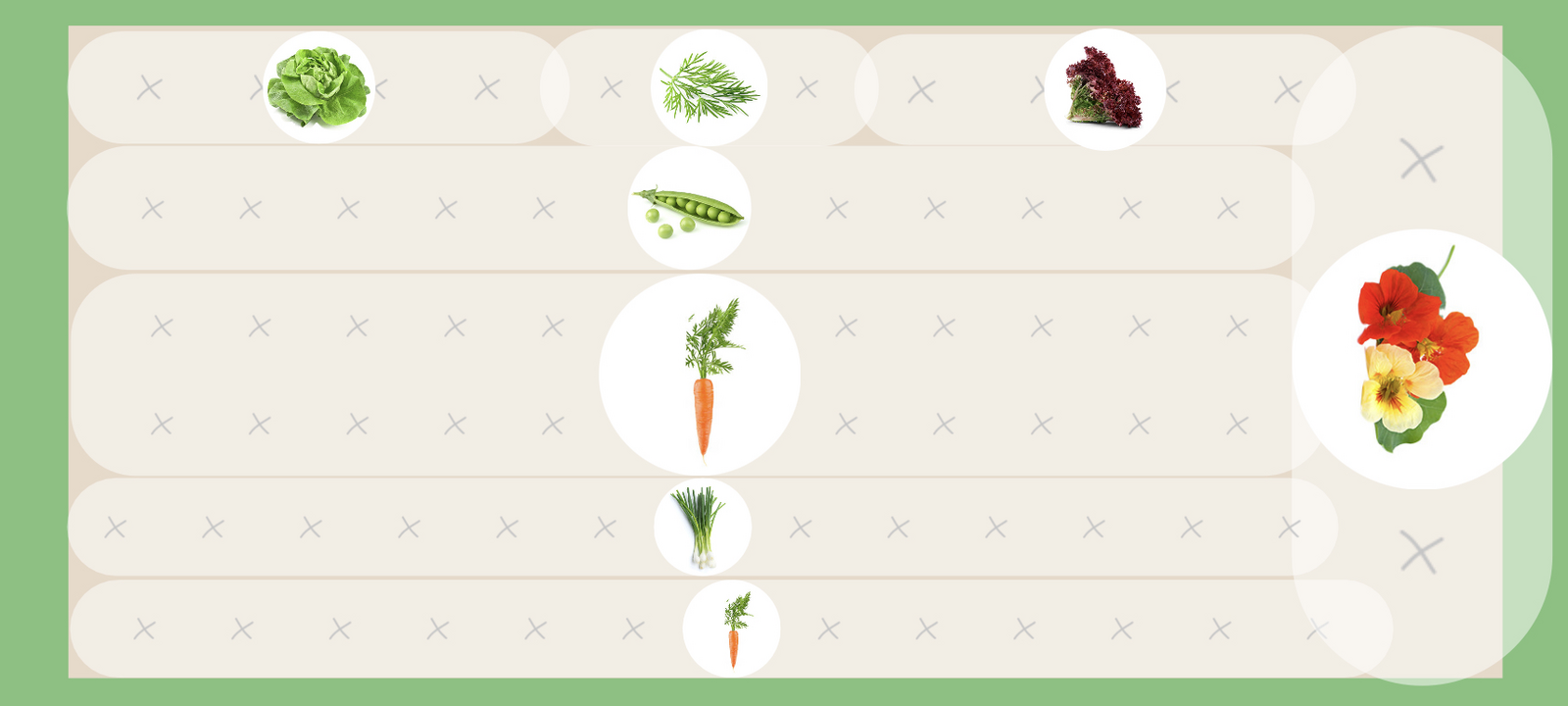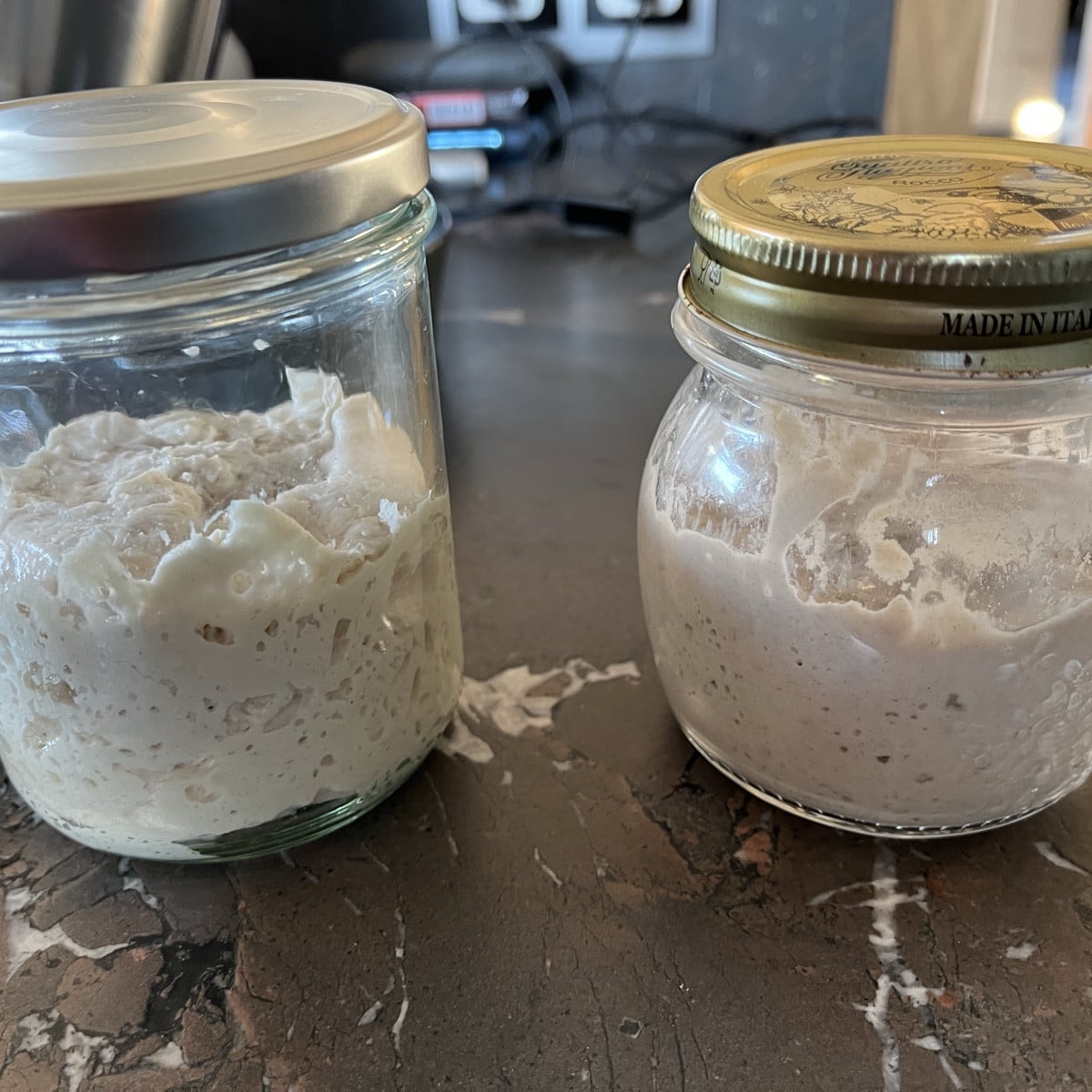
Sowing Carrots: Tips for Sowing Carrots
Carrots are a healthy vegetable that you can easily grow in your garden. Carrot seeds are usually sown directly into the bed. You can find instructions on sowing carrots and tips for successful sowing in this article.
This Article Contains:
Quick Overview
Sowing Carrots: Timing, Germination Period and Spacing
- Germination temperature: 10 to 22 ° C/50 to 72 ° F
- Germination period: 14 to 28 days
- Planting depth: 0.5 cm/0.2 in (light germinator)
- Planting distance and row spacing of carrots: 3 - 5 cm/1.2 - 2 in x 30 cm/11.8 in
- Timing: between March and July, depending on the variety
Carrot Sowing at a Glance
- Prepare the soil: Weed, remove stones and loosen deeply; work in compost and, if necessary, sand or loam
- Pre-germinate the carrots
- Sow carrots directly into the bed (radishes are suitable as marker seeds here)
- Prick out and separate carrots: the distance between the plants should be 3 - 5 cm/1.2 - 2 in
- Mound up carrots to prevent green 'heads'
Sowing Carrots: What You Need to Know
If you want to sow carrots, there are a few important things to know about the carrot plant. Carrots belong to the umbellifer family (Apiaceae) and prefer a sunny, wind-protected location with loose, deep and humus-rich soil.
There are different varieties of carrots that vary in size, shape and color. The most popular varieties are the orange, long carrots. However, there are also short, blunt carrots or those with unusual colors such as red, white or yellow. It's worth trying out different varieties to find out which ones suit your taste and garden best.
Preplant Carrots or Sow Directly?
Whether you should preplant carrots or sow them directly depends on your climatic conditions and the cultivation period. As carrots only germinate when the soil temperature is warm enough, the soil should have reached at least 7 to 10 ° C/47 to 50 ° F. Carrots do not tolerate transplanting very well, which is why they are usually sown directly into the open ground from March. Root vegetables in general often do not tolerate being moved outdoors so well, as this damages their roots and disturbs their growth. However, if you want to grow carrots outdoors earlier in the year, you can still preplant carrot seedlings. Alternatively, you can also sow carrot seeds under a cold frame or a warming fleece.

When to Sow Carrots?
Most carrot varieties are sownfrom March to July. Depending on the variety, carrots need around 16 to 20 weeks before you can harvest them. You can extend your harvest window with staggered sowing, where you sow every one to two weeks.

Learn More About Sowing Dates
In our library you will find information on the individual carrot varieties with cultivation periods, tips on planting and harvesting. You will also find good and bad companion plants to help you plan a mixed crop.
View Library NowSowing Carrots - A Guide
1) Prepare the Floor
In order for the carrot plants to thrive, it is important to prepare the soil well: weed out the weeds and remove large stones from the bed. You can use a digging fork or hoe for this. Loosen the soil deeply without digging it up. You can work in compost or other organic fertilizer to ensure there are enough nutrients in the soil. Then smooth the surface and mulch the soil if necessary. Water well once so that the soil is sufficiently moist and your seeds germinate. You can then sow your carrot seeds a week later.
2) Pre-sprout the Carrots
Carrots often germinate very slowly or poorly, but this can be avoided with a trick. Put the small seeds in a screw-top jar with some quartz sand and a little water (the sand should only be slightly damp and not floating in the water). Shake the mixture and place it on a heater for a few days. The heater should not be too hot and should be in as bright a place as possible (windowsill). As carrots are light germinators, they will find good conditions for germination and should start germinating after a few days. When the time has come, you can scatter the seeds together with the sand into the seed groove and press them down carefully.

3) Sowing Carrots Directly Into the Bed
Sand, seaweed lime and rock flour in the seed furrows to a maximum depth of 1 - 2 cm/0.4 - 0.8 in is conducive to germination and growth. As carrots are light germinators, they are only planted about 0.5 cm/0.2 in deep in the soil. Press the seeds down lightly and cover them with soil. Finally, press the soil down and water carefully. As carrots do not always germinate so reliably, more seeds are sown in a groove and then thinned out later. The planting distance of 3 cm is therefore not maintained when sowing. It is important to ensure that the soil always remains moist. Especially in the first few weeks after sowing, the carrots need sufficient moisture to germinate. If the soil is too dry, you should therefore water regularly.
Our tip: As germination is very slow (3-4 weeks), you can mix in radishes as marker seeds . They sprout faster and thus indicate the carrot row. In addition, the markers are ready to harvest after just 6 weeks and therefore do not prevent the carrots from growing. However, be careful when harvesting the radishes so that the carrot seedlings are not damaged.
4) Prick and Separate Carrots
When the seedlings are about 3 - 4 cm/1.2 - 1.6 in tall, you should thin them out. This involves removing weak or crowded seedlings to give the remaining plants more room to grow. The distance between the plants should be around 3 - 5 cm/1.2 - 2 in. Otherwise the plants will compete for nutrients, water and space.
Finally, you should also make sure that the carrots are protected from pests. Carrot flies and carrot flies in particular can cause a lot of damage to carrots. However, you can ward them off by covering the plants with a fine net or by planting companion plants such as marigolds or dill.

5) Pile up Carrots
You can improve the quality and taste of carrots by piling them up. Mounding involves piling the soil around the top of the carrot to cover it and protect it from the sun. This prevents the carrots from turning green or discoloring on the surface.
Carrots in Raised Beds: Your Planting Plan
Like most root vegetables, carrots are ideal for growing in raised beds. The advantage of raised beds is that the soil is deep, loose and well-drained, which favors the growth of carrots. You can also easily and conveniently hoe and loosen the soil around the carrots. To make the most efficient use of the space in your raised bed, you can plant a mixed crop. Suitable companions are vegetables such as lettuce, radishes, peas and beet.
What Goes Well With Carrots in Raised Beds?
For a larger harvest window, it is best to combine carrot varieties with different harvest periods. Two different carrot varieties grow in this mixed crop: an early carrot ('Jaune du Doubs') and a late carrot that stays in the field a little longer ('Nantes 2'). Between the carrots, a classic is planted next to the carrots: onions. Carrots and onions harmonize very well in a mixed crop. Winter onions are particularly easy to work with. They are sown once and you can harvest them all year round, as they grow perennially. Peas, dill and lettuce such as 'Lollo Rosso' are also grown in this bed. Nasturtium at the edge of the bed rounds off the whole thing. With a raised bed, you don't need a climbing aid and the plant can simply climb over the edge of the raised bed. In addition, nasturtiums are popular with some pests and may protect other crops from infestation. From July onwards, beautiful flowers will also appear, which will delight insects. These flowers are also super healthy and a great addition to fresh salads.

Good pre-crops for year-round planting include spinach, cress, kohlrabi and radishes. The radishes are sown together with the carrot seeds and thus mark the carrot row. As radishes grow much faster and have a shorter growth phase, they make room in the bed before the carrots really get going. You can sow onions, garlic, parsley and lamb's lettuce as succession crops or plant them as seedlings.
Obtaining Carrot Seeds
If you want to obtain carrot seeds yourself, make sure you buy a seed-resistant variety (not an F1 hybrid). Don't harvest all the carrots after the first season, but leave a few roots in the soil. They will survive there until the following year. In spring, they start to sprout again and later form the beautiful inflorescences. The seeds can be taken from these in summer/autumn. If you would like to know more about How to Obtain Your Own Seeds, you can find more information in the article on this topic.
If you have any questions or comments, please write to us at [email protected].
Would you like to receive helpful gardening tips all year round and plan your own beds optimally? Then register here or download the Fryd app for Android or iOS.
Fryd - your digital bed planner
Image by Holger Langmaier on Pixabay

Marie
Marie is an agronomist. She is particularly interested in the sustainable and organic cultivation of vegetables and other plants. In her own garden, she gained experience and likes to try things out to learn from nature. She is particularly interested in the values and principles of permaculture, in order to contribute not only to the well-being of nature, but also to the well-being of people and future generations.
Learn MoreCurrent Topics in the Community

We had an olive tree ... when it didn't survive a harsh winter, my husband and our children turned it into this sculpture - a real #heart element in our garden. We planted a rambler rose on the second olive tree, which enchants us every year with its white flowers. It looks as if it were a flowering rose bush ....

Liked 5 times
May I introduce: my roommates Max (left) and Moritz. Max is a "sweet starter", which I used for the panettone and I can say it's much better than the store-bought one! The baguette (ok I still have to work on the perfect shape 🤣) with yeast only. The Moritz is a rye sourdough and is used for Vintschgauer.

Hello lovelies I am new to gardening What recommendations do you have for buying seeds? Or which stores can you recommend? I'm planning to start with the classics Onions, potatoes, garlic, carrots, herbs, lettuce, tomatoes, peas, beet and pumpkin
Show 3 answersPopular Articles

Overwintering Parsley: How to Do It Successfully

How to Grow Lettuce in Winter: Varieties, Sowing, Harvesting

Growing Sage Plant: Tips for Sowing and Harvesting

What Herbs Can Be Planted Together?

Create & Design a Permaculture Garden

Overwintering Plants: Tubs, Pots and Raised Beds

Pruning, Fertilizing & Propagating Currants: Care Tips

Pruning Raspberries: How to Do It

Vegetable Garden With Greenhouse: How to Use Greenhouse Effect

Winterizing Beds and the Garden: How to Do It
FAQ
Pre-grow carrots on the windowsill or sow directly outdoors?
Carrots germinate from a soil temperature of 7 to 10 degrees. It therefore depends on your climatic conditions and when you want to grow carrots. In general, carrot seedlings do not tolerate transplanting very well and are usually sown directly into the open ground from March.
When can you start sowing carrots and for how long?
Most carrot varieties are sown from March to July. It is best to combine early and late carrot varieties in order to have the widest possible harvest window.
It is best to sow directly outdoors. Only cover the seeds with about 0.5 cm of soil, as carrots are light germinators. Make sure the soil is evenly moist.
How long do carrots need to germinate?
Your carrot seeds should germinate after around 3-4 weeks. For more reliable and faster germination, you can pre-germinate the seeds.
When the plants are about 3-4 cm tall, thin out the carrot seedlings. Pull weak seedlings that are too close together out of the soil. The distance between the individual carrots should be 3-5 cm.
This prevents the heads of the carrots from turning green due to incident sunlight. This improves the quality and taste of the carrots.